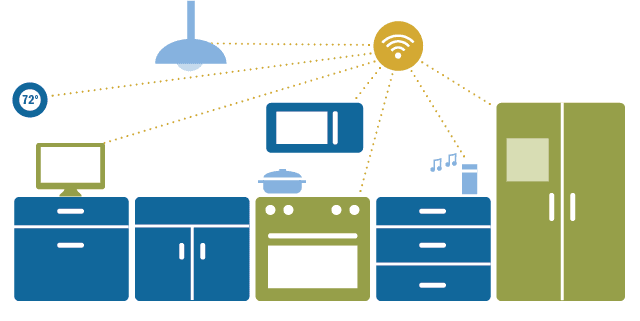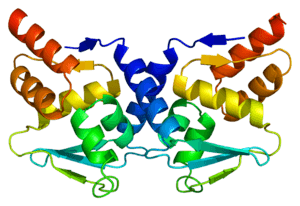
Soon, nearly every device will be online. That is both a beautiful and a dangerous thing
“We live in a connected world” is a well-worn axiom. Even so, few people realize the true extent of that interconnectivity. Networking giant Cisco Systems estimates that by 2015 as many as 15 billion devices will be connected to the Internet—more than double the world’s population. One forecast suggests that the number of such devices will reach 50 billion by 2050, and that is almost certainly an underestimate. Many of those machines will interact with each other without our intervention, and often without our knowledge. When that happens, the Internet of Everything will have truly arrived.
But the Internet of Everything faces significant security challenges. It will consist of billions of devices programmed to handle multiple functions autonomously and asynchronously. Any node could be an attack vector for the entire system. Locating and containing a breach in such a dynamic, distributed system may be close to impossible. This matters because an attack on the Internet of Everything won’t simply destroy data—it will disrupt the physical world.
The Internet of Everything has been described as a transition from “Machina habilis” to “Machina sapiens”—from a world where machines respond only to human commands to one in which machines, enabled with complex algorithms and adaptive behaviors, act as intelligent agents on behalf of individuals. By carrying out tasks ranging from optimized traffic management to monitoring the health of the elderly to nuanced control of energy usage, the Internet of Everything should make the world smarter and our lives easier. It will also make it much easier for hackers to cause real-world damage.
We’ve already seen this sort of attack happen. The first came in 2010, when the Stuxnet virus targeted the systems that controlled centrifuges used in Iran’s nuclear program, causing them to spin destructively out of control. Stuxnet, which was probably a joint U.S.–Israeli venture, quickly created blowback. In August 2012 an attack on Saudi Aramco, which supplies about one tenth of the world’s oil, destroyed or compromised some 30,000 computers and 2,000 servers. The attack, which almost certainly originated in Iran, was intended to stop Aramco’s oil production. Although the hackers failed, former CIA director Leon Panetta described the attack as “probably the most destructive attack that the private sector has seen to date.”
The Internet of Everything exponentially increases the potential for physically destructive cyber attacks.
The Latest Bing News on:
Internet of Everything
- Shares of Internet of Things Play Impinj Soar on Strong Earnings and Outlookon April 25, 2024 at 8:02 am
Impinj stock skyrocketed Thursday after the chip provider offered robust guidance and better-than-expected earnings. The company manufactures radio-frequency identification, or RFID, chips for ...
- Internet of Things (IoT) Market to Expand at a Stellar 19.4% CAGR through 2031 | SkyQuest Technologyon April 25, 2024 at 3:45 am
Market will attain a value of USD 1572.37 billion by 2031, with a CAGR of 19.4% over the forecast period (2024-2031). Internet of Things (IoT) refers to the network of connected devices over the ...
- Internet of Thingson April 21, 2024 at 5:00 pm
Silicon Labs is aiming at battery-free harvested energy applications with xG22E, a family of wireless microcontrollers covering Bluetooth Low Energy, 802.15.4 or proprietary 2.4 GHz links. “As Silicon ...
- Harnessing the Potential: 10 Exciting Ways the Internet of Things Shapes Our Worldon April 18, 2024 at 6:30 am
The Internet of Things (IoT) has revolutionized the way we interact with technology, shaping our world in unprecedented ways. From smart homes to industrial applications, IoT has permeated various ...
- Global X Internet of Things ETFon April 17, 2024 at 5:00 pm
Advice, rankings and one great story every day.
- Innovative Impact: 10 Ways the Internet of Things Redefines Our Worldon April 17, 2024 at 6:24 am
In today’s rapidly evolving technological landscape, the Internet of Things (IoT) stands out as a groundbreaking phenomenon. With its ability to connect devices and enable seamless communication ...
- Internet of Everything (IoE) Market: Anticipated Surge with a Predicted 15.2% CAGR, Forecasting US$ 5.0 Billion by 2033on April 15, 2024 at 6:56 pm
The Internet of Everything (IoE) market is projected to be worth US$ 1.2 billion in 2023 and is anticipated to grow to US$ 5.0 billion by 2033, with a Compound Annual Growth Rate (CAGR) of 15.2%. This ...
- The security minefield of the Internet of Thingson April 15, 2024 at 2:24 pm
When IoT devices run on outdated firmware or do not get updated regularly, they become easy targets for cybercriminals.
- What You Should Know About The Internet Of Everythingon April 8, 2024 at 11:41 am
Do it now! As Scott J. Shackelford of the University of Indiana argues in his book The Internet of Things: What everyone needs to know: “We are just at the beginning of governing AI with ...
- 2024 Internet Of Things 50: Meet The Enablers Of A Connected Worldon April 1, 2024 at 7:00 am
For the 2024 Internet of Things 50 CRN picked the coolest and most noteworthy channel-friendly vendors driving innovation forward and delivering real value, whether they’re focused on hardware ...
The Latest Google Headlines on:
Internet of Everything
[google_news title=”” keyword=”Internet of Everything” num_posts=”10″ blurb_length=”0″ show_thumb=”left”]
The Latest Bing News on:
Internet of Everything Security
- How TikTok grew from a fun app for teens into a potential national security threaton April 27, 2024 at 2:04 am
SAN FRANCISCO — If it feels like TikTok has been around forever, that's probably because it has, at least if you're measuring via internet time ... also emerging as a potential national security ...
- What You Can Learn From The Security Industry's Evolutionon April 26, 2024 at 4:45 am
The security industry is in the midst of a major transformation—and is emerging as a dynamic source of technology innovation and business resilience.
- 5 things to know for April 26: Trump trials, University protests, Harvey Weinstein, TikTok ban, Starlineron April 26, 2024 at 3:59 am
A multi-day storm threat is set to impact millions of people in the central US through the weekend. Forecasts show parts of Texas, Missouri and Iowa are in the direct pathway of multiple rounds of ...
- Net neutrality is back as FCC votes to regulate internet providerson April 25, 2024 at 2:35 pm
would provide the FCC with clearer authority to adopt future rules governing everything from public safety to national security. Some of the issues the FCC will be further empowered to address after ...
- 5 things to know about the return of net neutrality ruleson April 25, 2024 at 6:56 am
The Federal Communications Commission (FCC) voted Thursday to restore Obama-era net neutrality rules. Here’s what you need to know: What is net neutrality? Net neutrality refers to the ...
- Internet of Things (IoT) Market to Expand at a Stellar 19.4% CAGR through 2031 | SkyQuest Technologyon April 25, 2024 at 3:45 am
Market will attain a value of USD 1572.37 billion by 2031, with a CAGR of 19.4% over the forecast period (2024-2031). Internet of Things (IoT) refers to the network of connected devices over the ...
- GigNet and IotaComm to Collaborate on Internet-of-Things (IoT) Solutions for the Mexican Caribbeanon April 22, 2024 at 2:20 pm
GigNet, a Digital Infrastructure company with an extensive regional fiber optic broadband network from Costa Mujeres, North of Cancun, through the Hot ...
- The Power of Connectivity: 10 Ways the Internet of Things Reshapes Industrieson April 18, 2024 at 5:24 am
In today’s digital era, the Internet of Things (IoT) is revolutionizing industries worldwide. With the seamless connectivity it provides, IoT is transforming the way businesses operate, enhancing ...
- Innovative Impact: 10 Ways the Internet of Things Redefines Our Worldon April 17, 2024 at 6:24 am
In today’s rapidly evolving technological landscape, the Internet of Things (IoT) stands out as a groundbreaking phenomenon. With its ability to connect devices and enable seamless communication ...
- 5 outdated security practices you shouldn’t use anymoreon April 17, 2024 at 3:00 am
“You should run antivirus scans on your computer” is another of these well-meaning pieces of security advice. Yes, it’s true that antivirus scans are useful, but that doesn’t mean you have to spend ...
The Latest Google Headlines on:
Internet of Everything Security
[google_news title=”” keyword=”Internet of Everything Security” num_posts=”10″ blurb_length=”0″ show_thumb=”left”]




